Any hybridizing suggestions?
Hi, I've got a few neos flowering at the same time and I want to try to hybridize just for fun. I've read the Derek Butcher's articles and although it sounds easy, somehow I don't think it will be so easy. I've also read threads from the forum, but I still have an unanswered question. Do you just pollinate one of the flowers (pistol)? Will the whole center be full of seeds months from now? or just that one capsule? How can you tell when the pistol is mature enough and receptive? I keep reading it's in the morning between 9-11am. Is it when it surpasses the stamen? I know I should get rid of those to avoid self pollination. Well, if anyone has any pointers and would like to share, I'll REALLY apreciate it.
Comments (28)
LisaCLV
17 years agoDid you read the thread in the link below, twins? It should answer most of your questions about how many to pollinate, how many will set up, how to tell when they're ripe, etc.
As to how you can tell when the stigma (tip of the pistil) is receptive, if you have very good eyesight (and X-ray vision) you might possibly be able to see a sticky little droplet forming on the tip. This is much easier to see on a Billbergia or Vriesea or other type that has its floral parts hanging out for all to see, but on a Neo. it's almost impossible. For one thing the stigma on a Neo. is smaller than on those other genera, and for another thing most (but not all) of them seem to have the stigma hidden underneath the stamens, where it's invisible until you remove them. Some varieties do have a pistil that is longer than the stamens, but this is not something that changes throughout the day as you suggest, it is just a varietal difference. Most of the time it just looks like a little nub down inside the throat of the flower, and it's pretty hard to see what's going on down there.
For that reason, I just go by when the pollen is ripe. That's much easier to see because it will be loose and powdery if you rub your finger or your pollinating tool against the anther (pollen-bearing part of the stamen). If you try to do it too early they will feel more like little hard chips. You want to see powder and it must be dry. Generally around 9:00 AM seems to be prime time, at least where I live.
I posted these pictures on another thread, but I'll post them again here. The first shows removal of the anthers (the stigma is underneath), and the second shows placing the pollen tag.
{{gwi:460121}}
{{gwi:460122}}
Hope this helps. Bottom line, it IS easy!
Here is a link that might be useful: Neo. pollination
Related Professionals
Arden-Arcade Landscape Contractors · Farmington Landscape Contractors · Garland Landscape Contractors · Mashpee Landscape Contractors · Mendota Heights Landscape Contractors · Pleasant Prairie Landscape Contractors · Wallingford Landscape Contractors · Wanaque Landscape Contractors · San Pablo Landscape Contractors · Clermont Fence Contractors · Lexington Fence Contractors · Markham Fence Contractors · Maryland City Fence Contractors · Newark Fence Contractors · Oldsmar Fence Contractorstwins
Original Author17 years agoThank you for the information. I really appreciate it, since I don't know anyone who's tried it or even interested. I'm very new to this and very addicted to bromeliads- spend numerous hours on FCBS trying to educate myself. Bottom line, I'm thrilled that you responded!
This morning I went out there at about 9 or so, and made some observations in a span of about 2 1/2 hours. The first set of neos I worked with had the loose powdery pollen, I think I may end up with self pollinated neos there. I did see the center and it looked like a small ball. I was also using a magnifying glass (X4) but it didn't facilitate a view of the piston, maybe it wasn't receptive yet. As the morning progressed, I noticed that the stamens became hard and no longer had the powdery pollen; by this time I assumed my window of opportunity was gone. I still went on ahead and tried to pollinate, I guess hoping for a miracle. Anyway, I attemtped to pollinate 4 neo's and carefully wrote down all observations in hopes that one worked and then I can go back and repeat whatever I did.
I keep reading it's easy, but it's hard to pinpoint that receptive period.
Also, I noticed that some of the flowers looked like they were going to open tomorrow morning, so I went on ahead and carefully opened them and took out the stamens in hopes that tomorrow morning when I go back they'll be open and I won't have to worry about self pollinating. Was this a mistake? I will continue to look in this forum for hybrid postings and I'll certainly look for yours- Much Thanks!LisaCLV
17 years agoIt wasn't a mistake, but I usually don't bother removing the stamens in advance. I don't have any data on percentage of self-pollination, but in my experience most Neo. varieties don't seem to self-pollinate that easily. Just based on the results I've been getting, I have concluded that the majority are either self-infertile or at least prefer outside pollen.
Of course there are a group of proven self-pollinators that will do it every single time whether you touch them or not, and I usually try to avoid using them as seed parents altogether if I know that is their habit. If you really want to try crossing onto one of them, though, you can do what you did, or just go in early the same morning before the flowers open and remove the stamens. I have never had much luck getting these guys to accept outside pollen, as they seem to prefer their own, but other people have done it, so I don't want to discourage you from trying. I would say these comprise maybe 10% of the Neo population, and there's no way to know beforehand if that's what you've got unless you've seen it set seed before.
Then there are some that seem willing to go both ways, but it doesn't happen as often as you'd think. I've never actually tried intentionally selfing any, and maybe more would set up if I smooshed the pollen around in there, but when I remove the anthers I pull them up and away from the stigma, and that seems to be enough in most cases. I guess I just don't worry about it too much because I figure (rightly or wrongly) that I'll be able to tell if the cross took by the appearance of the offspring. If you're worried about it though, go ahead and emasculate them ahead of time, but the reason I don't do it is because I want to have that pollen available for use too.
I have kind of a routine where I'll remove the anthers of one flower and hold them in a little film can lid or other shallow container for later use, and then I'll pollinate that flower with another one, and then I'll do the one that I just took that pollen from, and so on down the line, so the process of harvesting pollen and emasculating are the same. Of course this usually results in doing WAY too many crosses, so maybe it's better to plan in advance what is going on what and stick to the plan! HA! It's only April and already I'm looking at more little tags than I know what to do with...... *sigh*
twins
Original Author17 years agoLisa, thanks for all this info. I now feel way more confident and have a much better understanding of how this all works- I read your past threads and have printed them for reference, as well as this one. I look forward to putting all this knowledge to good use tomorrow morning. Thanks for sharing :)
Katiemario-one
17 years agoI attempted to pollinate one of my Neo's that are flowering over the weekend. First I took at plant label and cut it in half to make it narrow so it would fit in the flower. I used the label to open up the center and to get to the pollen, the pollen came off pretty easily. As I moved the plant label around the pollen was falling off so I guess I timed it well.
Next I guess I winged it, I couldn't see the stigma so I gently moved the label below the anthers hoping to make contact with the stigma.
Now that I reviewed this post I guess I should've removed the anthers to try and get a better view of the stigma.
Any suggestions are welcome.
Below are the before and after pictures.
Magnified View
{{gwi:460123}}Later on in the evening.
{{gwi:460125}}LisaCLV
17 years agoI'm confused, Mario. Did you self-pollinate the flower or put another plant's pollen on it? Also, how were you able to remove the pollen without removing the anthers? Did you scrape it off? I'm trying to get a clear picture here so I can advise you.
If you are trying to self it you don't really need to remove the pollen, just smoosh it around in there. If you were not trying to self it, it would probably be better not to stick anything like a tag into the flower until you've pulled off the anthers, as that will cause the pollen to fall off as you describe, and increase the chances of self-pollination if the cultivar in question is one that accepts its own pollen.
I was trying to explain this in my earlier replies, but in case I didn't make it quite clear, I don't find it absolutely necessary to actually look at the stigma while I'm pollinating, although it certainly helps to know where it is. Once I've removed the anthers and have determined that there is in fact a stigma there, and that I didn't inadvertantly remove it too, then I just pile as many anthers of the pollen parent on top of it as I can, trying to make sure the pollen side is facing down. If the corolla tube is too wide and they fall down past the stigma, then I wedge the pollination tag in there and add some more. That usually helps hold it in place.
This is also why I don't worry that the stigma may not be at it's peak receptivity yet. If the pollen is ripe and it's making contact, the stigma will take it up whenever it's ready. I'm more concerned about doing it too late. I see a little drop of nectar just above the anthers in your first picture. If I can, I like to get in there before that forms. Drier is better. The nectar doesn't seem to soak into the pollen the way water does, but it kind of gums up the works and makes it harder to see what you're doing. When I see that, I tend to figure my window of opportunity is closing. Also, pollen won't STOP being loose and fluffy if it's too late in the day, it's just that if you try to do it BEFORE it gets that way then it won't work. On some varieties the petals will start to curl up as early as 10:00 or 11:00, which is another clue you're too late.
I can't realy tell what's going on in your second picture, but one thing I would do if I were you is dump all of the water out before you pollinate, because wet pollen is no good. If you can do it the night before, even better.
Hope this helps. I guess it is more complicated than I thought!
mario-one
17 years agoIn this particular instance I was trying to self-pollinate a Neo. Black Beauty. With the small label, I scrapped off the pollen and then wiggled the label around the inside of the petals.
I have not tried removing the anthers and placing them upside down in the flower. I guess that'll be my next step along with draining the water. I was also wondering if that was nectar in the first photo or just water, I didn't think it was water so thanks for confirming that.
Assuming it all works fine, how long before I know it worked. What are the indications?
LisaCLV
17 years agoMario, the reason for removing the anthers is to PREVENT self-pollination when you are crossing it with something else. If you just want to self it then that seems like a waste of time to me. I'd just tap them or use something like your cut tag to spread the pollen around. You probably did the right thing the first time, I just wasn't sure that was what you were trying to do.
As I said before, not all varieties will self-pollinate. Some seem to be self-infertile, but since I'm usually trying NOT to self-pollinate I can't tell you how many fall into that category. You'll just have to wait and see.
If you use the link in my first reply on this thread, it will take you to another thread that will show you what to look for as signs that seeds are setting. I don't want to repeat myself TOO much! ;-)
LisaCLV
17 years agoOkay, I took this today. Maybe it will help.
The flower on the left is still intact. You can see how the 6 anthers come together and form kind of a dome over the stigma. You should also be able to see how they are attached to the sides of the corolla tube. When you remove them you want to grasp them right at that attachment point to minimize pollen spillage, and then pull up and away from the stigma, as shown in my previous picture above.
The flower on the right has had all the anthers removed so you can see the stigma in the center. It's a little blurry but you're really not going to be able to see much more than that.
{{gwi:460127}}
Carol love_the_yard (Zone 9A Jacksonville, FL)
7 years agoWhat a fantastic photo and explanation, Lisa!
splinter1804
7 years agoHi everyone.
Wow! This is a blast from the past, I remember reading and saving the original way back in 2007.
The only problem with these old posts was that another programme was needed to upload pictures, and Photo Bucket was one of the most commonly used. If however you later moved the pictures around in your Photo Bucket files, it broke the link to Garden Web and the picture was deleted and this is why many of these old posts have pictures missing.
Fortunately we can now upload pictures without requiring a second site to do so.
All the best, Nev.
Carol love_the_yard (Zone 9A Jacksonville, FL)
7 years agolast modified: 7 years agoI know it's an Oldy-Goldy, Nev, but some of us, albeit old, gardeners are just learning to pollinate now in mid-2016. I ran around the yard with a magnifying glass today... I kid you not.

Carol in Jacksonville
Carol love_the_yard (Zone 9A Jacksonville, FL)
5 years agoNev, your final two photos - your "rewards" - are just beautiful!!!
Carol
splinter1804
5 years agoHi everyone.
Carol - I twice tried to post pic's of some more of my hybrids this morning but they were rejected; I don't know why.
All the best, Nev.Carol love_the_yard (Zone 9A Jacksonville, FL)
5 years agolast modified: 5 years agoHi Nev,
Houzz/GardenWeb has been very squirrely lately. So sorry you can't post pics! Ugh! (Could it be image size?... I don't mean dimension, but rather the file size?) Several times recently I have written long posts just to have them completely disappear as I start to add photos. These things are perfect snapshots of frustration, right?! I've taken to writing my posts in a separate program and then copy/paste when I'm finished, just so I don't lose my work. And Houzz probably keeps scratching their collective heads, wondering why participation has dropped off so drastically. Ugh, ugh, ugh. I, for one, really feel the loss.
Carol
splinter1804
5 years agolast modified: 5 years agoHi everyone.
Thanks Carol, I know exactly what you are saying about cutting and pasting as I had to do that on another forum a year or so back as I too got sick of losing posts.
I never thought about the picture size so I'll try down sizing just a couple of the pic's I tried to post yesterday and see how that goes.
These are three of my hybrids that I have registered with the BCR.
Neoregelia 'Len-Lynton Surprise'
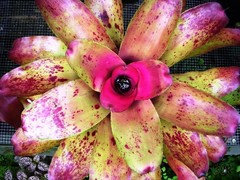
Neoregelia 'Rocklow Darkness'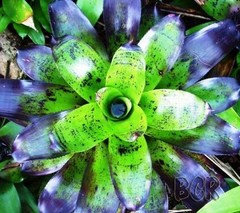
Neoregelia 'Dunmore Feverata'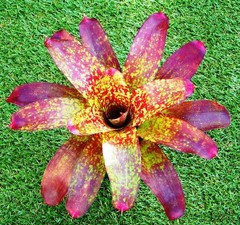
Lets see how these go.All the best, Nev.
splinter1804
5 years agolast modified: 5 years agoHi everyone - Well it looks like that was the problem, so here goes for a few more, this time some Aechmeas, I have also registered with the BCR.
Aechmea 'Apricot Torch'
Aechmea 'Little Surprise'
Aechmea 'Rocklow Gold'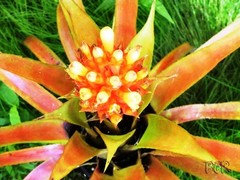
Aechmea 'Watsonia Sunrise'
Lets see how these go.
All the best, Nev.splinter1804
5 years agolast modified: 5 years agoHi everyone - It looks like Carol has solved the problem of my posting pictures, so here goes with a few more of the Neoregelias I have registered.
Neoregelia 'Dunmore Delight'
Neoregelia 'Dunmore Darkness'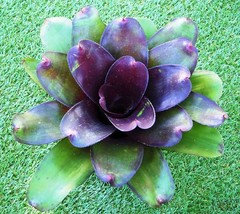
Neoregelia 'Rocklow Rose'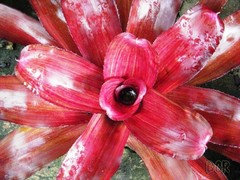
Neoregelia 'Killalea Violet'
Neoregelia 'Len-Lynton'
Neoregelia 'Rocklow Wagon Wheel'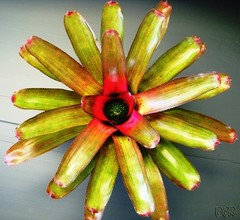
Neoregelia 'Nina and Jarka'
Neoregelia 'Lave Blast'
Neoregelia 'Killalea Stairway'
Neoregelia 'Minnamurra Magic'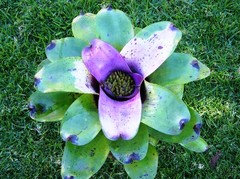
Neoregelia 'Rocklow Morn'
Finally one of the newer ones which as yet is unregisteredNeoregelia 'Bea Hanson' x 'Rosea Striata'
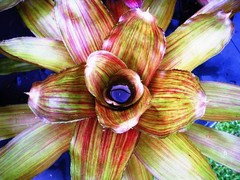
All the best, Nev.tsugajunkie z5 SE WI ♱
5 years agoAwesome pix, Nev. I'm glad you got the pic riddle solved as those are some very fine plants. Thanks
tj
splinter1804
5 years agolast modified: 5 years agoHi everyone.
Yes tj I'm glad I got it solved as well, as I very much enjoy sharing pictures of my plants with others.
All the best, Nev
Carol love_the_yard (Zone 9A Jacksonville, FL)
5 years agolast modified: 5 years agoHi Nev and Everyone,
Nev, those plants are beautiful! You have done some very fine work. I am partial to neos and I really love Rocklow Darkness!
I loved Lisa's explanation at the top of this thread about pollination and then your further pictorial of what happens when one goes nuts with these things - apparently, it results in lots and lots of trays of seedlings! I'm well on my way :)
Above are Aechmea 'Mend'. [As you educated us, Nev, I expect these will all turn out solid green.[(https://www.houzz.com/discussions/aechmea-mend-when-are-the-berries-ripe-dsvw-vd~5349317?n=7) But nevertheless, a nice learning experience for my first-time out of the gate with seeds.
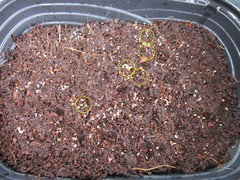
Above are Neo 'Morado'. [As expected from other previous posts, these are almost all albino seedlings.[(https://www.houzz.com/discussions/if-the-seed-parent-is-albomarginated-dsvw-vd~1775280?n=44) About six green ones among a hundred or so white ones.
Raising all of these for the fun of it. I have not had any good results with my many attempts at manual pollination. All of the above seeds were from natural or self-pollination. I have watched YouTube videos and read many, many posts. For tools, I have used a paintbrush, a toothpick, a tweezers... I've got my cheaters (readers) glasses on... I'm out there between 9 - 11 am... what am I doing wrong I wonder? Just the wrong plants, maybe. I'll keep at it.
Carol in Jacksonville
splinter1804
5 years agoHi everyone.
Carol - You may not be doing anything wrong; not all flowers can successfully be pollinated.
Also the particular flower may not be at the stage where it's ready to accept pollen and be fertilised.
See Lisa's comments (April 24 2007) where she says: "As to how you can tell when the stigma (tip of the pistil) is receptive, if you have very good eyesight (and X-ray vision) you might possibly be able to see a sticky little droplet forming on the tip. This is much easier to see on a Billbergia or Vriesea or other type that has its floral parts hanging out for all to see, but on a Neo. it's almost impossible. For one thing the stigma on a Neo. is smaller than on those other genera, and for another thing most (but not all) of them seem to have the stigma hidden underneath the stamens, where it's invisible until you remove the stamens."
You say, "All of the above seeds were from natural or self-pollination"; this doesn't mean the resulting seedlings may be no good, the only problem with this is, you don't know who the male parent is. There have been countless beautiful hybrids produced by the actions of Mother Nature's "little helpers".
If you look through the B.C.R. you will find several cases where the male parent is unnamed; this can be for one of three reasons; firstly the hybridiser doesn't wish to share this information, secondly, the male parent was a NOID (had no ID) or thirdly, the pollination was performed by an insect or small bird, in which case the pollen could have come from anywhere.
One of my hybrids (Aechmea 'Grey Surprise') is just one such example where the male parent was unknown and the cross was probably made by birds or insects. See: http://registry.bsi.org/index.php?fields=Breeder&id=14401&search=wood
Aechmea 'Grey Surprise'
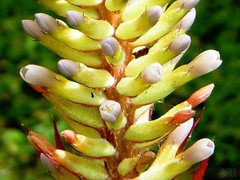
As you progress with hybridising, you will find that many crosses just won't take for various reasons. However, do as you say, "I'll keep at it." as it's been proven that persistence beats resistance.
All the best, Nev.
debbyabq
5 years agoI haven't watched this video yet as I am more interested in Tillandsias, but this video was posted today and might be of interest:
Barry Landau's Tropical Planet - Chester Skotak Bromeliad Hybrids
https://www.youtube.com/watch?v=mwDuoDPqQto
Apparently Barry gives a long presentation with slides and may cover what you are interested in. In previous videos he has visited shows there in southern California. Also he helps make videos for Rainforest Flora.
splinter1804
5 years agoHi everyone.
debbyabg - You say, "I haven't watched this video yet as I am more interested in Tillandsias"; although Chester Skotak to my knowledge doesn't work on Tillandsias, in one part of the Video Barry Landau explains how to use the FCBS Photo Index, and there's lots of Tillandsia pictures and information on there you might be interested in.
All the best, Nev.
debbyabq
5 years agoNev, thanks for looking at it closer than I did! It just seemed he'd be talking a great deal more about Broms than about Tillies. I've decided to download the video for my files and I'll watch it off my tablet :) I use the brower Pale Moon which is out of FireFox and one can get extensions that allow downloading videos in MP4 format from YouTube. Also, the free program 4K Video Downloader is another option for Windows users :) The only problem with downloading videos is if one wants to keep them, it's a good idea to have a spare external drive (or several of them!)
splinter1804
5 years agoHi everyone.
Debbyacq - You say, "It just seemed he'd be talking a great deal more about Broms than about Tillies." The thing is, Tillandsias are also bromeliads, just another one of the many different genera.
It's because they have come to be commonly known as "air plants", people tend to think of them as not being bromeliads but a separate plant genus altogether.
They all belong to Tillandsioideae sub-family; this is the same family which also includes Alcantarea, Catopsis, Glomeropitcairnia, Guzmania, Mezobromelia, Racinaea, Vriesea and Werauhia.
All the best, Nev






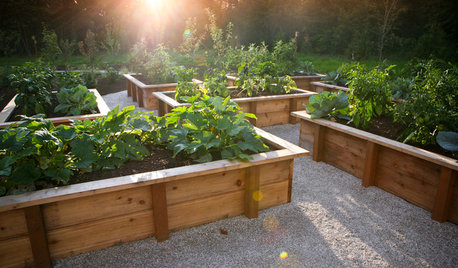









splinter1804